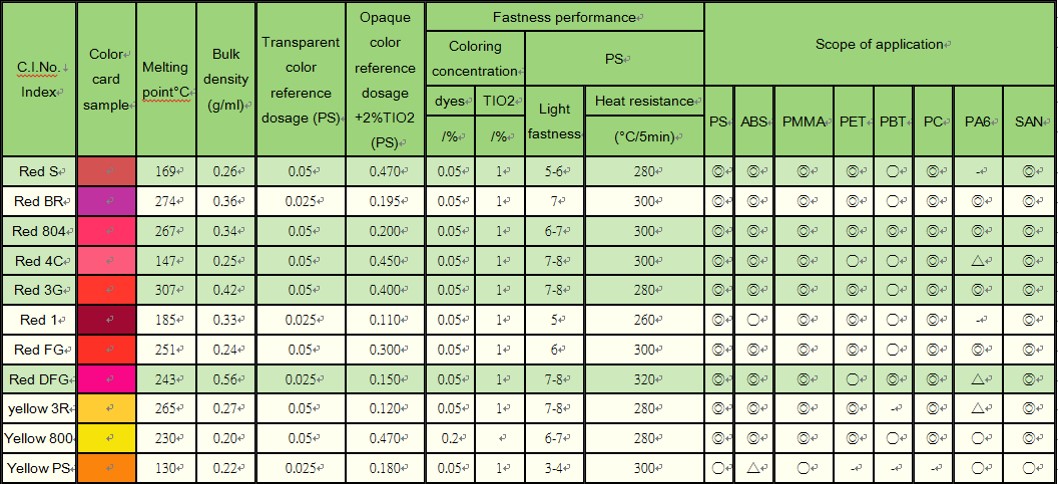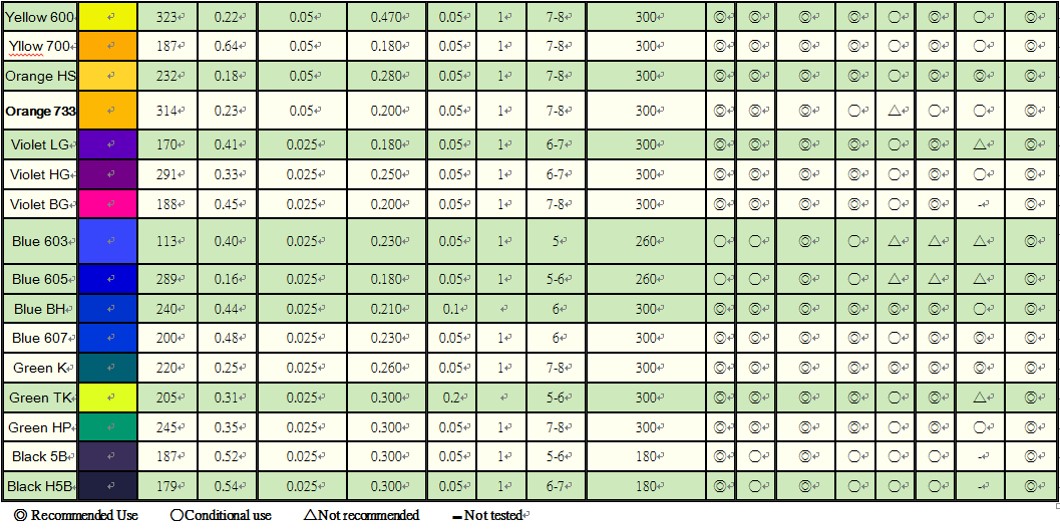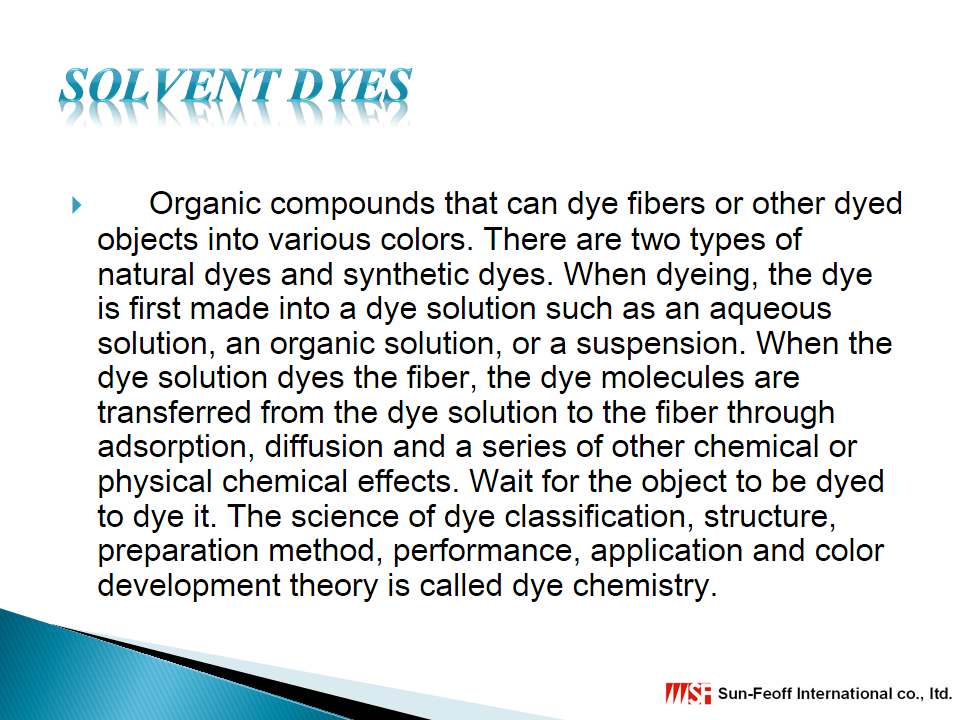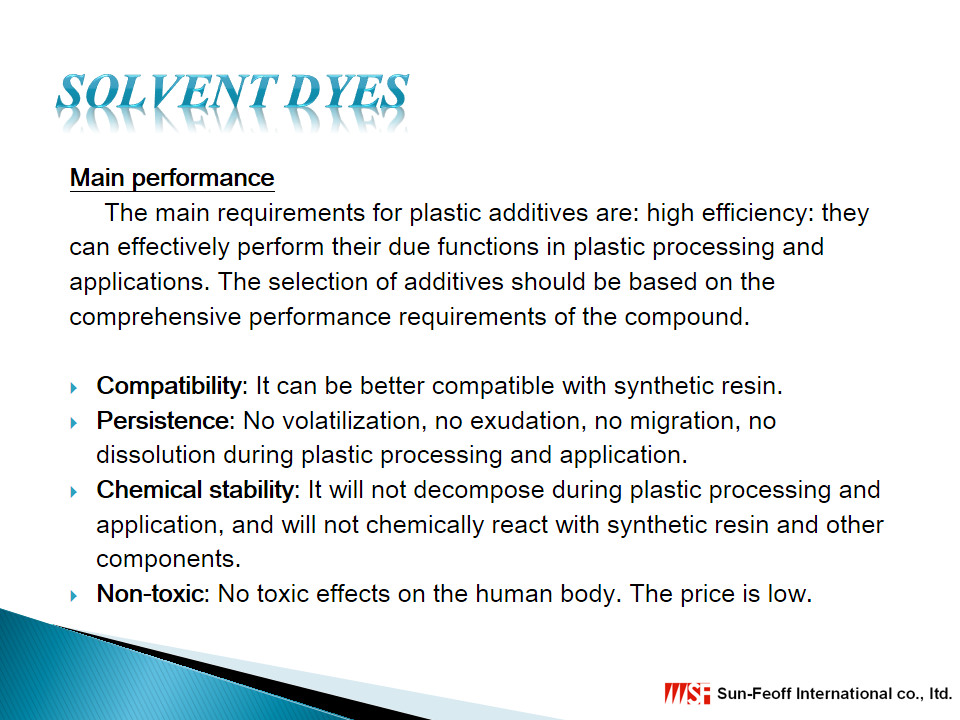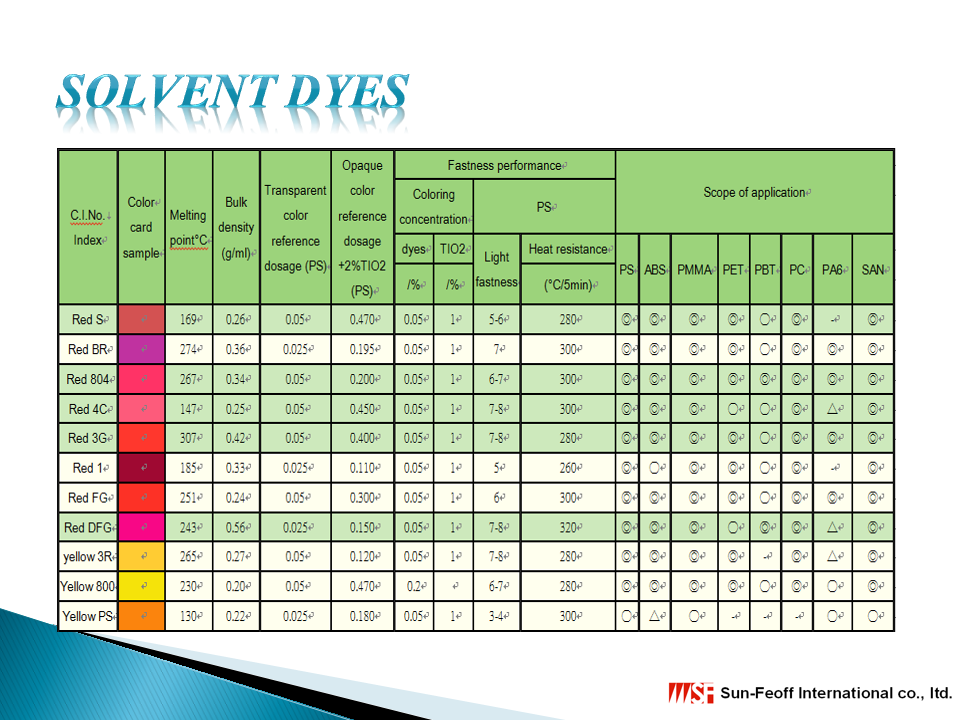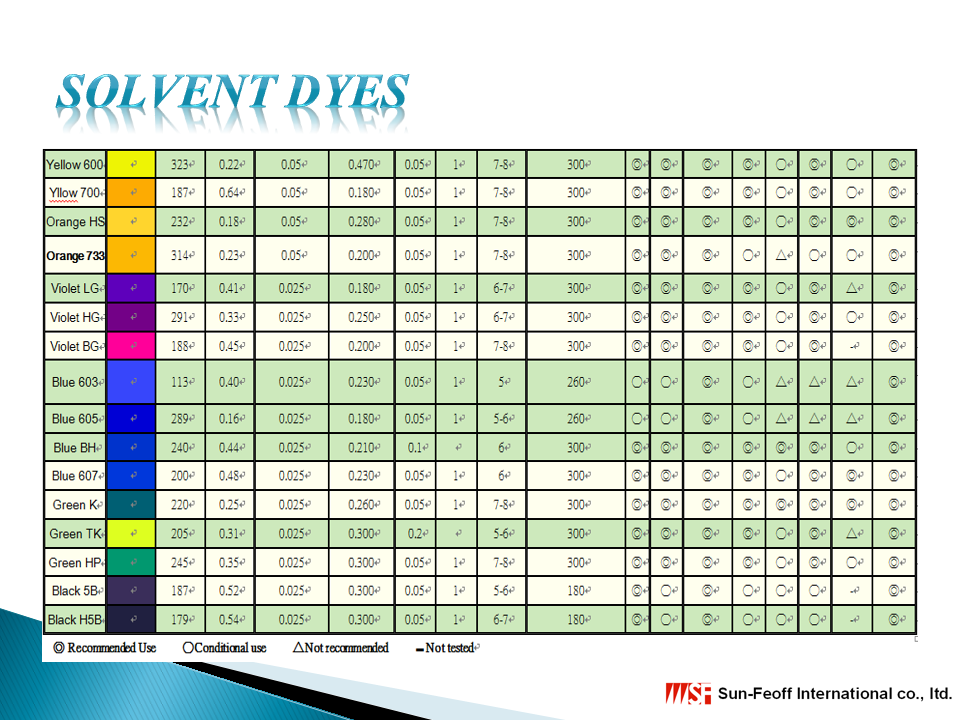Organic compounds that can dye fibers or other dyed objects into various colors. There are two types of natural dyes and synthetic dyes. When dyeing, the dye is first made into a dye solution such as an aqueous solution, an organic solution, or a suspension. When the dye solution dyes the fiber, the dye molecules are transferred from the dye solution to the fiber through adsorption, diffusion and a series of other chemical or physical chemical effects. Wait for the object to be dyed to dye it. The science of dye classification, structure, preparation method, performance, application and color development theory is called dye chemistry.
The main requirements for plastic additives are: high efficiency: they can effectively perform their due functions in plastic processing and applications. The selection of additives should be based on the comprehensive performance requirements of the compound.
- Compatibility: It can be better compatible with synthetic resin.
- Persistence: No volatilization, no exudation, no migration, no dissolution during plastic processing and application.
- Chemical stability: It will not decompose during plastic processing and application, and will not chemically react with synthetic resin and other components.
- Non-toxic: No toxic effects on the human body. The price is low.
